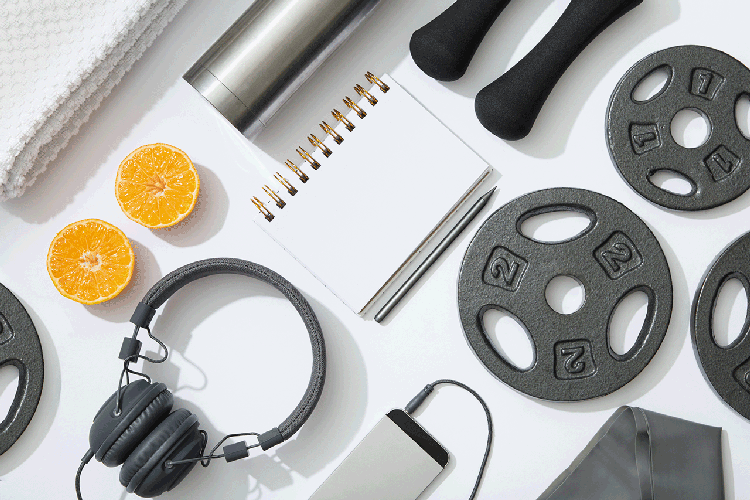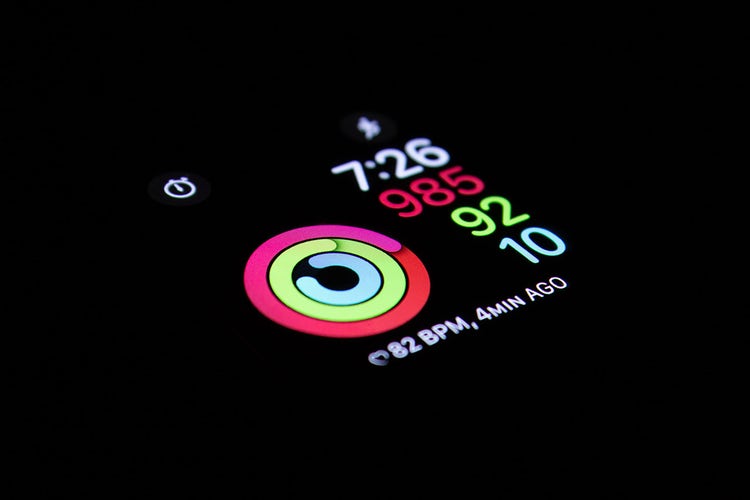Make a Shift With HIFT

There are seven days per week. For most folks, life happens, with work, family obligations and other responsibilities only affording three (if you’re lucky four) days per week to exercise. With only a few days per week in working out, which type of workout should you do … cardio? Or perhaps lifting weights? How do you fit it all? You make a shift to HIFT! Because HIFT’s (high-intensity functional training) main goal is targeting all components of fitness: strength, endurance, flexibility and mobility in a short amount of time.
HIFT HIFT hooray!

For health reasons like managing weight or preventing hypertension and diabetes, the World Health Organization recommends 150 minutes per week of moderate cardiovascular exercise or at least 75 minutes per week of vigorous intensity cardiovascular exercise, and at least two or more days per week of resistance training of your major muscle groups. If you break that down, that’s five days per week of 30 minutes of aerobic exercise or three days per week of 25 minutes of intense vigorous aerobic exercise, plus at least two days per week of strength training. Whoa! It’s no wonder the Centers for Disease Control and Prevention’s survey discovered that only about 23 percent percent of U.S. adults are meeting physical activity recommendations. Most folks don’t exercise because they lack the time or because they aren’t interested in brisk walking or running, calling it repetitive and boring. Sound familiar?
Everyone loves a discount!

Think about HIFT as a sale on fitness gains with 100 percent health benefits. HIFT workouts are usually between 25 percent to nearly 80 percent less than traditional fitness workouts. Perform one HIFT, get four free: strength, endurance, flexibility and mobility.
You are operationally ready in tackling your environment whether you’re a firefighter hauling a 50-foot hose, a mom carrying your toddler because he’s tired of walking or a Spartan athlete. HIFT studies show radical improvements in strength, aerobic and anaerobic capacity, and body composition.
HIFT is not HIIT

Sometimes HIFT is confused with HIIT (high-intensity interval training). Even though high intensity is used in a few exercises, there are differences:
- Traditional HIIT uses standard 1:2 or 1:3 work-to-rest ratios, usually involving one type of anaerobic exercise like sprinting hard for 30 seconds and taking a two- to three-minute break before performing another sprint.
- Interval training is used in HIFT, but there are no set work-to-rest ratios, still allowing more work to be done in a short workout time.
HIFT is a type of programming following the philosophy of military training called Total Force Fitness. HIFT is similar in training to CrossFit, SEALFit and the U.S. Marine Corps’ High Intensity Tactical Training. But don’t let this scare you away. The key is knowing your relative intensity.
HOW TO HIFT
Let your intensity be your guide

The beauty of HIFT is emphasizing functional movements using exercise patterns recruiting many muscle groups. Recruiting many muscles groups alone drives up the intensity. Use the RPE (rate of perceived exertion) scale ranging from 1 to 10. Your intensity increases as you rank yourself higher on the scale. Ranking yourself during the workouts anywhere from 7 to 10 means it’s intense!
Minimal time

HIFT programs typically do not require a lot of training time and volume. Doing 20 to 30 minutes for about two to three days per week will be substantial to keep up your cardiovascular fitness and strength.
Variety

The key in HIFT programs is variety because life and sport require unpredictable physical requirements. HIFT uses a mixture of body weight, resistance training, Olympic weightlifting and powerlifting, gymnastics and functional movements. You’re lifting, pushing, pulling, throwing and moving planes at different speeds and with different loads at your relatively high intensity.
Constant variation of HIFT programs keeps boredom at bay, helping you stick to your workouts. In comparing HIFT and aerobic and resistance training in a 2014 study led by Katie Heinrich, Ph.D., fewer participants dropped out of the HIFT program and they maintained enjoyment throughout the workout.
Minimal equipment

Effective HIFT programs use minimal and even untraditional exercise equipment. For example, the Canadian Infantry School program called Austere uses ammunition cans, rocks and sand for performing thrusters, presses, walking lunges and weighted pull-ups. Outcomes for the Austere program were equal to or better than the traditional workouts even with nontraditional equipment and shorter workouts.
Sample HIFT workout
Perform all or part of this sample workout—20 minutes will do wonders. Remember: Do not skip the warm-up or cool-down.
Warm-up: 8-10 reps each (about 5 minutes)
- Knee pull
- Straight-leg kick
- Standing clockwise and counterclockwise hip rotation
- Thoracic rotation
- Wall push-up
- Body-weight lateral lunge
- Shuffle
- 1 court/track lap (walk/run)
High-intensity exercise segment (about 35 minutes)
- Circuit 1 (as many rounds as possible in 5 minutes)
- 8-10 squats
- 8-10 laterally moving push-ups
- 8-10 lateral shuffles
- Rest two to three minutes
- Circuit 2 (as many rounds as possible in 5 minutes)
- 8-10 Brazilian kick-outs
- 8-10 TRX rows
- 30 seconds on a rowing machine, bike or high-knee running (moving laterally)
- Rest two to three minutes
- Circuit 3 (as many rounds as possible in 10 minutes)
- 20 battle-rope slams
- 10 lateral ball tosses (each side)
- 20 walking lunges
- 10 lateral leaps, box jumps or burpees
Cool-down: full-body static stretch (about 5 minutes)
Respect your own abilities
Extreme fatigue is when injuries most often occur. Listen to your body and stop even before the time allotted, if necessary.
Meet yourself where you are. If you’re uncomfortable with certain movements such as box jumps, perform a similar alternative movement. Remember, you possess abilities another person does not have and vice versa.
Remember to keep on keeping on because fitness and health is a journey. Keep giving it a go with a “HIFT HIFT hurray!”
Video credit: fotostorm, Getty Images
Photo credit: svetikd, Getty Images; melecis, Getty Images; Design Pics, Getty Images; skynesher, Getty Images; Mikolette, Getty Images; Ryan Stone, Unsplash; FangXiaNuo, Getty Images; bogdankosanovic, Getty Images